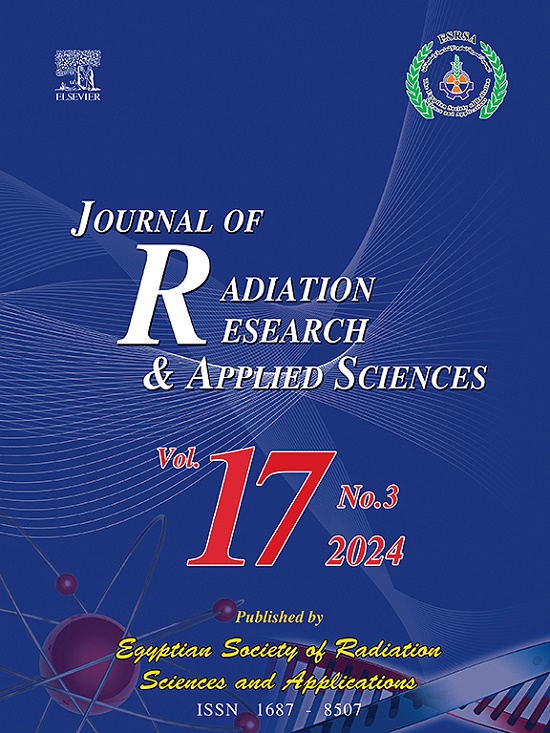电子/紫外线辐照前后PI气凝胶和CF/PTA复合材料的放气性能
IF 1.7
4区 综合性期刊
Q2 MULTIDISCIPLINARY SCIENCES
Journal of Radiation Research and Applied Sciences
Pub Date : 2025-03-14
DOI:10.1016/j.jrras.2025.101410
引用次数: 0
摘要
采用不同的测试标准研究了聚酰亚胺(PI)气凝胶和碳纤维/聚三唑树脂(CF/PTA)材料在电子/紫外线照射前后的真空脱气行为。PI气凝胶和CF/PTA复合材料的原位真空放气特性对收集的挥发性可冷凝物质(CVCM)具有较高的温度敏感性,沉积在298K时仅占总质量损失(TML)的0.1%-0.2%。发现PI气凝胶与CF/PTA复合材料的TML随时间的关系符合准一级动力学方程。电子辐照后,PI气凝胶降解导致CVCM升高,而CF/PTA复合材料表现出升高的TML,特别是在1 MeV电子辐照后的CVCM。真空紫外照射下的原位质谱分析结果表明,这种形式的辐照诱导了PI气凝胶的表面活化,导致放气产物中H2O的比例显著降低,CVCM显著降低。本文章由计算机程序翻译,如有差异,请以英文原文为准。
Outgassing properties of PI aerogel and CF/PTA composites before and after electron/ultraviolet irradiation
In this study, different test standards were employed to investigate the vacuum outgassing behavior of Polyimide (PI) aerogels and Carbon Fiber/polytriazole resin (CF/PTA) materials both before and after exposure to electron/ultraviolet irradiation. In-situ vacuum outgassing characteristics of PI aerogel and CF/PTA composites showed a high sensitivity to temperature in terms of Collected Volatile Condensable Material (CVCM), with depositions at 298K accounting for only 0.1%–0.2% of the Total Mass Loss (TML), respectively. The relationship between the TML of PI aerogel and CF/PTA composite over time was found to conform to a quasi-first-order kinetic equation. After electron irradiation, degradation of the PI aerogel resulted in an increase in CVCM, whereas CF/PTA composites exhibited an elevated TML, especially in CVCM after 1 MeV electron irradiation. In-situ mass spectrometry results obtained under vacuum ultraviolet irradiation revealed that this form of irradiation induced surface activation of PI aerogel, leading to a significant decrease in the proportion of H2O in the outgassing products and a notable reduction in the CVCM.
求助全文
通过发布文献求助,成功后即可免费获取论文全文。
去求助
来源期刊

Journal of Radiation Research and Applied Sciences
MULTIDISCIPLINARY SCIENCES-
自引率
5.90%
发文量
130
审稿时长
16 weeks
期刊介绍:
Journal of Radiation Research and Applied Sciences provides a high quality medium for the publication of substantial, original and scientific and technological papers on the development and applications of nuclear, radiation and isotopes in biology, medicine, drugs, biochemistry, microbiology, agriculture, entomology, food technology, chemistry, physics, solid states, engineering, environmental and applied sciences.
 求助内容:
求助内容: 应助结果提醒方式:
应助结果提醒方式:


